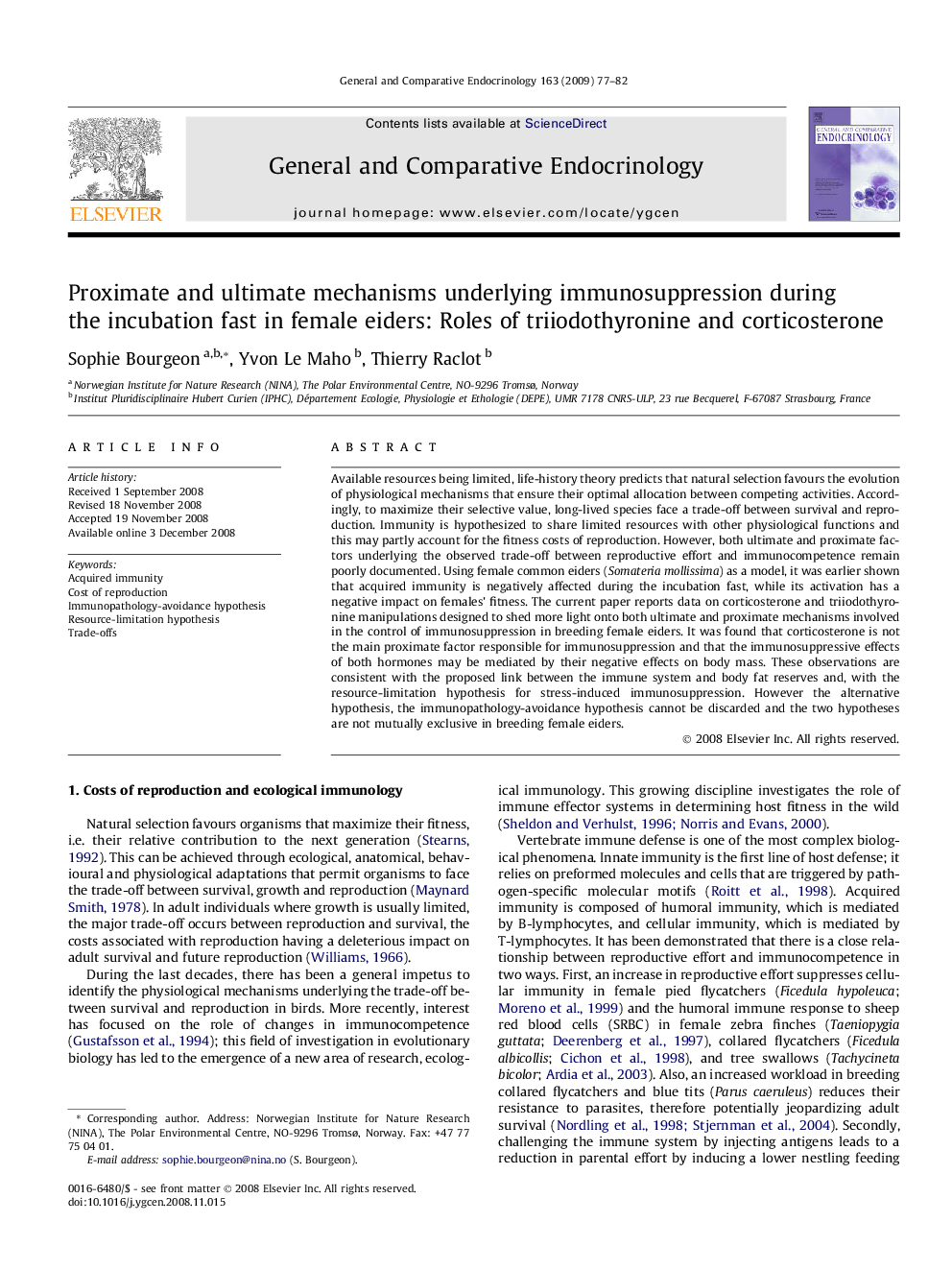| Article ID | Journal | Published Year | Pages | File Type |
|---|---|---|---|---|
| 2801402 | General and Comparative Endocrinology | 2009 | 6 Pages |
Abstract
Available resources being limited, life-history theory predicts that natural selection favours the evolution of physiological mechanisms that ensure their optimal allocation between competing activities. Accordingly, to maximize their selective value, long-lived species face a trade-off between survival and reproduction. Immunity is hypothesized to share limited resources with other physiological functions and this may partly account for the fitness costs of reproduction. However, both ultimate and proximate factors underlying the observed trade-off between reproductive effort and immunocompetence remain poorly documented. Using female common eiders (Somateria mollissima) as a model, it was earlier shown that acquired immunity is negatively affected during the incubation fast, while its activation has a negative impact on females' fitness. The current paper reports data on corticosterone and triiodothyronine manipulations designed to shed more light onto both ultimate and proximate mechanisms involved in the control of immunosuppression in breeding female eiders. It was found that corticosterone is not the main proximate factor responsible for immunosuppression and that the immunosuppressive effects of both hormones may be mediated by their negative effects on body mass. These observations are consistent with the proposed link between the immune system and body fat reserves and, with the resource-limitation hypothesis for stress-induced immunosuppression. However the alternative hypothesis, the immunopathology-avoidance hypothesis cannot be discarded and the two hypotheses are not mutually exclusive in breeding female eiders.
Related Topics
Life Sciences
Biochemistry, Genetics and Molecular Biology
Endocrinology
Authors
Sophie Bourgeon, Yvon Le Maho, Thierry Raclot,
